
Spotlight: Hot waters, shrinking fish
EMBL scientists investigate how zebrafish bodies change when grown at higher temperatures.
SCIENCE & TECHNOLOGY2025
science-technology
Showing results out of

EMBL scientists investigate how zebrafish bodies change when grown at higher temperatures.
SCIENCE & TECHNOLOGY2025
science-technology
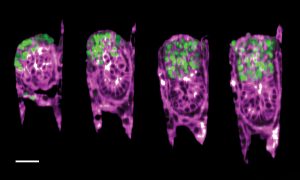
EMBL researchers have created an engineered uterus that allows a closer look at a mouse embryo’s development and its interactions with the uterine environment.
SCIENCE & TECHNOLOGY2023
picture-of-the-weeksciencescience-technology
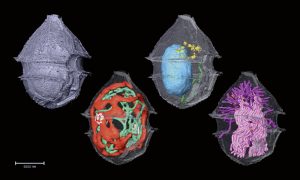
A new method developed by EMBL scientists can help us identify and investigate plankton species in field samples with greater speed, accuracy, and resolution than ever possible before.
SCIENCE & TECHNOLOGY2023
sciencescience-technology
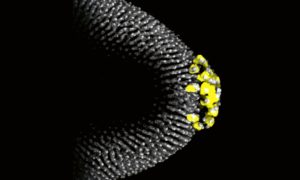
For a fruit fly embryo to develop correctly, key factors need to get to the right place at the right time – a journey that starts in the developing egg, as seen in this image from the Ephrussi Group at EMBL Heidelberg
SCIENCE & TECHNOLOGY2023
picture-of-the-weeksciencescience-technology
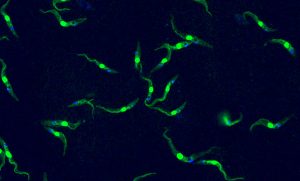
This single-celled organism the size of a dust particle is capable of causing deadly tropical diseases in both humans and livestock –Trypanosoma brucei, in an image by Luciano Dolce from EMBL.
LAB MATTERSSCIENCE & TECHNOLOGY2023
lab-matterspicture-of-the-weekscience-technology
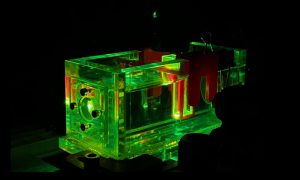
Researchers in the Prevedel Group use photoacoustic spectroscopy setup to test and optimise probes before their usage in mouse neuroscience.
LAB MATTERSSCIENCE & TECHNOLOGY2023
lab-matterspicture-of-the-weekscience-technology
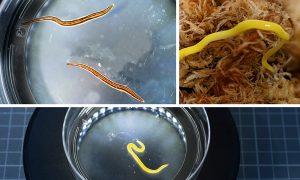
Tasmanian flatworms add to an EMBL researcher’s collection as she studies principles that control animal body size.
LAB MATTERSSCIENCE & TECHNOLOGY2023
lab-matterspicture-of-the-weekscience-technology
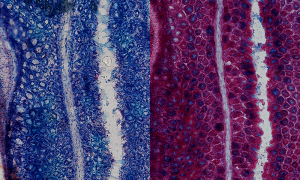
Mucus present in the mouse colon can be visualised using Alcian blue staining, as imaged here by EMBL predoctoral fellow Linda Decker.
LAB MATTERSSCIENCE & TECHNOLOGY2023
lab-matterspicture-of-the-weekscience-technology
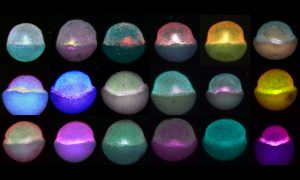
Zebrafish embryos during gastrulation, a very early stage of development, to study the effect of temperature on vertebrate embryo development.
LAB MATTERSSCIENCE & TECHNOLOGY2022
lab-matterspicture-of-the-weekscience-technology
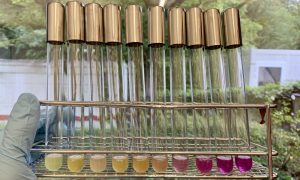
To identify which drugs disrupt bacterial envelope integrity, the Typas group uses a molecule called chlorophenyl red-β-D-galactopyranoside.
LAB MATTERSSCIENCE & TECHNOLOGY2022
lab-matterspicture-of-the-weekscience-technology
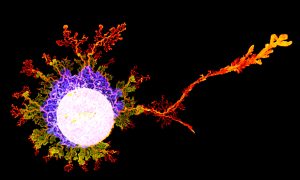
Physarum polycephalum, a single, giant cell containing tens of thousands of nuclei is large enough to be photographed with a phone.
SCIENCE & TECHNOLOGY2022
picture-of-the-weekscience-technology
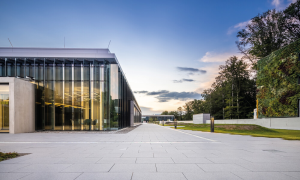
EMBL’s imaging centre makes advanced microscopy technologies accessible to the international scientific community.
LAB MATTERS2022
lab-matterspicture-of-the-week
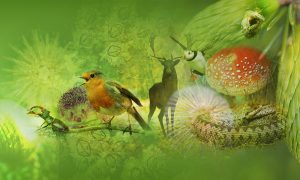
The Darwin Tree of Life project is an unprecedented initiative sequencing 70,000 species
SCIENCE & TECHNOLOGY2021
sciencescience-technology
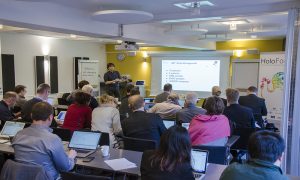
International project uses biomolecular data to improve animal feed and make meat production more sustainable
SCIENCE & TECHNOLOGY2021
sciencescience-technology

Using metagenomic data to find novel enzymes for plastic degradation and beyond
SCIENCE & TECHNOLOGY2021
sciencescience-technology

In the lab, Diënty Hazenbrink works with microbes that live in our guts. In her free time, she enjoys wildlife photography. A shared set of skills facilitates both activities.
LAB MATTERSPEOPLE & PERSPECTIVES2021
lab-matterspeople-perspectives
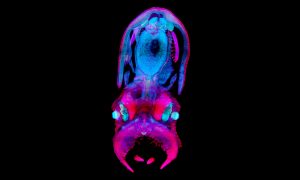
Some of the most amazing creatures live in the deep blue sea. The Mesoscopic Imaging Facility (MIF) at EMBL Barcelona was recently involved in studying one unique feature of the octopus: the ephemeral structures on the surface of their skin called Kölliker’s organs.
SCIENCE & TECHNOLOGY2021
sciencescience-technology
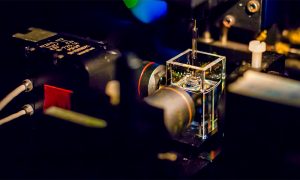
In the Mesoscopic Imaging Facility (MIF) at EMBL Barcelona, researchers study the details of biological systems in the context of organs, body parts, or entire organisms. This image shows OPTiSPIM1, one of the custom light-sheet microscope setups available at the facility.
SCIENCE & TECHNOLOGY2021
sciencescience-technology
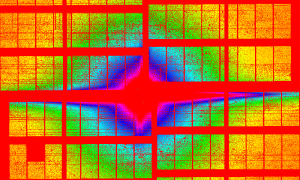
A collaboration led by EMBL Hamburg’s Svergun Group used small-angle X-ray scattering (SAXS) at the European XFEL to obtain data on samples containing coronavirus spike proteins and antibodies that bind them.
SCIENCE & TECHNOLOGY2021
sciencescience-technology
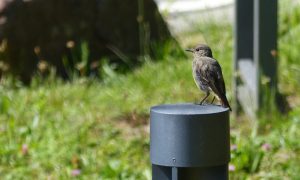
Mehdi Khadraoui, a former member of the EMBL Communications team, took this close-up of a black redstart.
LAB MATTERS2021
lab-matters
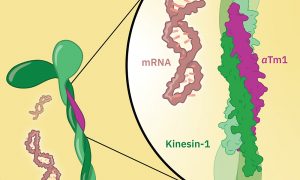
EMBL scientists generate a high-resolution crystal structure of the Kinesin-1/aTm1 transport complex in the fruit fly.
SCIENCE & TECHNOLOGY2021
sciencescience-technology

We all like a story about rediscovering treasures, right? Well, that’s just what happened recently at EMBL Grenoble!
PEOPLE & PERSPECTIVES2021
alumnipeople-perspectives
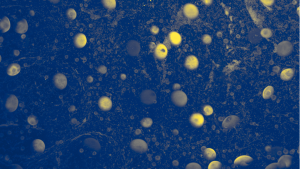
As evocative as a constellation of planets, these egg cells within a mouse ovary are at different stages of maturity.
SCIENCE & TECHNOLOGY2021
picture-of-the-weeksciencescience-technology
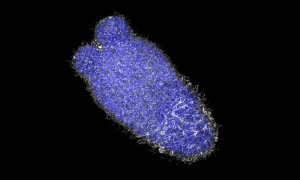
EMBL PhD student Anniek Stokkermans captured this side view of a Nematostella vectensis larva during this transition, using instrumentation in the Advanced Light Microscopy Facility at EMBL Heidelberg.
SCIENCE & TECHNOLOGY2021
picture-of-the-weekscience-technology
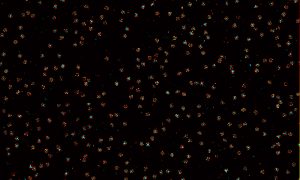
As perfect as a summer night sky, these nuclear pores help calibrate a customised super-resolution microscope in EMBL’s Ries group.
SCIENCE & TECHNOLOGY2021
picture-of-the-weekscience-technology
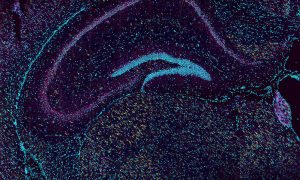
At EMBL, we have many dream teams – groups of individuals who support each other, innovate, and work together. One of those dream teams bridges two core facilities at EMBL Rome.
SCIENCE & TECHNOLOGY2021
picture-of-the-weekscience-technology
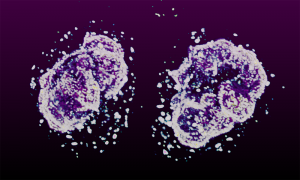
Captured by EMBL postdoc Arina Rybina, these ‘nuclear twins’ are two daughter nuclei straight after division of a HeLa cell.
SCIENCE & TECHNOLOGY2021
picture-of-the-weekscience-technology
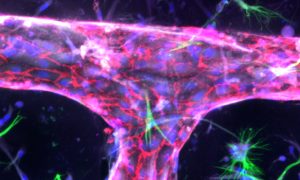
The Bernabeu Group aims to increase our knowledge of cerebral malaria, using in vitro engineered networks of human blood vessels and brain cells.
SCIENCE & TECHNOLOGY2021
picture-of-the-weekscience-technology
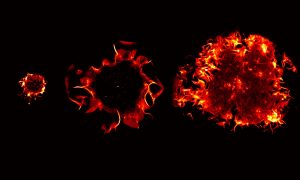
The EMBL Picture of the Week features a series of Jurkat T cells during different stages of the activation process.
SCIENCE & TECHNOLOGY2021
picture-of-the-weekscience-technology
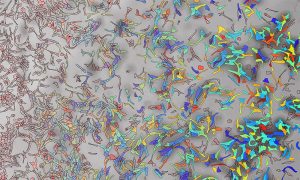
A page from a biologist’s colouring book? EMBL’s new interior wall design? Not quite – a bunch of liver cells, grown in the lab so that scientists can learn about fatty liver disease, or steatosis.
SCIENCE & TECHNOLOGY2021
picture-of-the-weekscience-technology
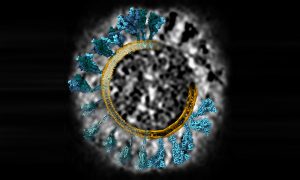
What does coronavirus’s spike protein look like in 3D? EMBL scientists and colleagues used cryo-electron tomography and molecular dynamics simulations to find out.
SCIENCE & TECHNOLOGY2021
picture-of-the-weekscience-technology
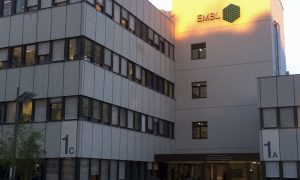
Throwback to June 2014: While EMBL Heidelberg’s main entrance is still in the dark, the well-known EMBL logo is already lit by the morning sun.
LAB MATTERS2021
lab-matterspicture-of-the-week
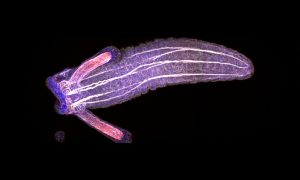
This image of a young Nematostella vectensis polyp shows two of the characteristic tentacles as well as the gaping mouth of the animal.
SCIENCE & TECHNOLOGY2021
picture-of-the-weekscience-technology
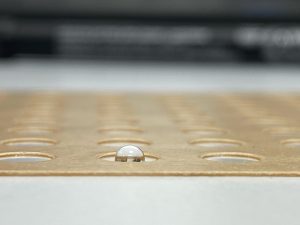
Scientists at EMBL Hamburg use droplets of protein solution to grow protein crystals. By exposing the crystals to X-rays, they are able to determine the protein’s molecular structure.
SCIENCE & TECHNOLOGY2021
picture-of-the-weekscience-technology

The cafeteria at EMBL Heidelberg now offers espresso and cappuccino with a more intense flavour and which are produced in a ‘green’ way.
LAB MATTERS2021
lab-matterspicture-of-the-week
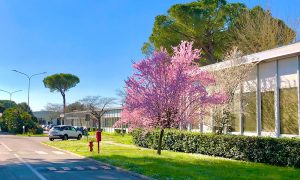
EMBL’s site in Monterotondo has recently been blessed with blue skies and sunshine, leading to trees blooming early on campus.
LAB MATTERS2021
lab-matterspicture-of-the-week
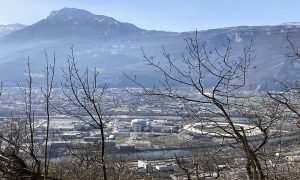
This photo shows the European Photon and Neutron (EPN) science campus where EMBL Grenoble is located. A delightful spring breeze in the air melts the last remaining patches of snow in the mountains.
LAB MATTERS2021
lab-matterspicture-of-the-week
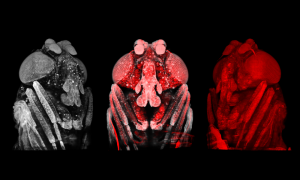
Like caterpillars turning into beautiful butterflies, fruit fly larvae have to go through metamorphosis to finish their development. However, despite the fruit fly Drosophila melanogaster being one of the best studied model organisms in biology, comparatively little attention has been given to this…
SCIENCE & TECHNOLOGY2021
picture-of-the-weekscience-technology
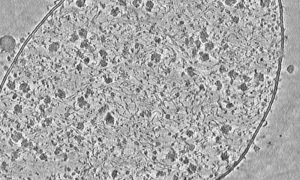
Liang Xue used cryo-electron tomography to capture this detailed image of a Mycoplasma pneumoniae cell.
SCIENCE & TECHNOLOGY2021
picture-of-the-weekscience-technology
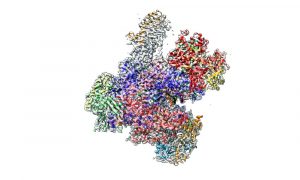
This week's Picture of the Week, which could also be a masterpiece of modern art, shows the enzyme RNA polymerase III, an assembly of 17 individual proteins combined into this complex structure.
SCIENCE & TECHNOLOGY2021
picture-of-the-weekscience-technology

The regular structures of crystals are a source of inspiration and fascination to us humans. While the crystals in this picture were not grown in nature, but instead by Petra Drncova from EMBL Grenoble, they share the same attributes as those found in nature.
SCIENCE & TECHNOLOGY2021
picture-of-the-weekscience-technology
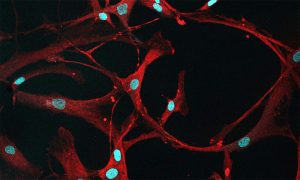
Studying cancers means also knowing what healthy cells look like. In this case, mesenchymal stromal cells (MSCs) from healthy bone marrow are a bit ‘loopy’.
SCIENCE & TECHNOLOGY2020
picture-of-the-weekscience-technology
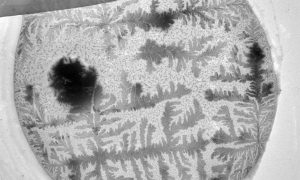
How does your crystal garden grow? EMBL's Electron Microscopy Core Facility was able to capture this garden of blooming crystals as they studied mosquito reproductive cells.
SCIENCE & TECHNOLOGY2020
picture-of-the-weekscience-technology
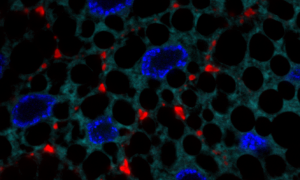
Those heart-shaped cells aren't just for show. They help tell the story of two proteins working together
SCIENCE & TECHNOLOGY2020
picture-of-the-weekscience-technology
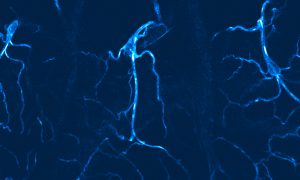
Beautiful flashes of blue colour help light the way for researchers to study cells in fruit fly larva that provide oxygen to tissues.
SCIENCE & TECHNOLOGY2020
picture-of-the-weekscience-technology
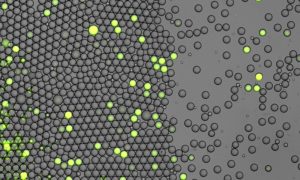
Bacterial cells are embedded in microfluidic droplets in oil. The fluorescence indicates the presence of the targeted DNA strain with the help of a characteristic DNA sequence.
SCIENCE & TECHNOLOGY2020
picture-of-the-weekscience-technology

The image shows one of the four rows of roof lights above the atrium, which is the main public space of the Imaging Centre.
SCIENCE & TECHNOLOGY2020
picture-of-the-weekscience-technology
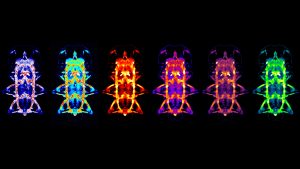
Paola Bertucci, from the Arendt Group at EMBL Heidelberg, studies the evolution of Platynereis dumerilii – a species of annelid polychaete worm.
SCIENCE & TECHNOLOGY2020
picture-of-the-weekscience-technology
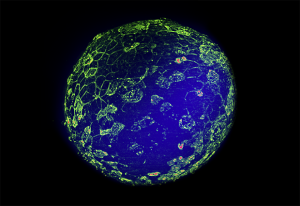
In the Trivedi Group at EMBL Barcelona, Krisztina Arató and Jia Le Lim study the early development of zebrafish embryos.
SCIENCE & TECHNOLOGY2020
picture-of-the-weekscience-technology
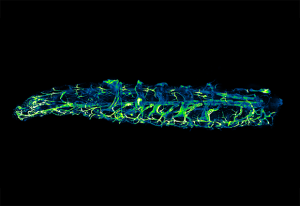
This image shows the tracheal system of a live fruit fly larva. Daniel Rios from the Leptin Group and Dimitri Kromm from the Hufnagel Group used this advanced microscope to investigate the dynamics of tracheal cells during development.
SCIENCE & TECHNOLOGY2020
picture-of-the-weekscience-technology
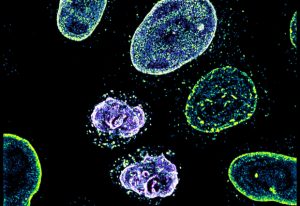
This picture of the week, taken by Arina Rybina in the Ellenberg group at EMBL Heidelberg, shows a high-resolution 3D microscopy image of living human cells: HeLa cells. In this fascinating fluorescing microspace, two newly formed daughter nuclei are captured to study the assembly of nuclear pore…
SCIENCE & TECHNOLOGY2019
picture-of-the-weekscience-technology
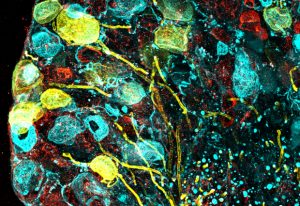
Traditionally, we talk about having five senses: sight, hearing, taste, smell and touch. In reality, our bodies are capable of much more. Sitting right under our skin are a variety of sensory neurons, which are specialised in detecting light touch, pain, temperature, itch or the body’s position.…
SCIENCE & TECHNOLOGY2019
picture-of-the-weekscience-technology
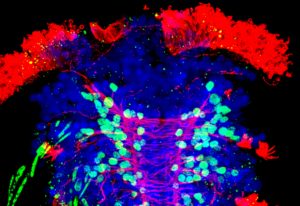
Is it a fungus or a strange plant? Actually it’s the larval form of Platynereis – a group of marine ringed worms. Scientists have been using them in their studies for the past 70 years, and they are among the preferred lab organisms. They are easy to keep in the lab, and under temperature and…
SCIENCE & TECHNOLOGY2019
picture-of-the-weekscience-technology
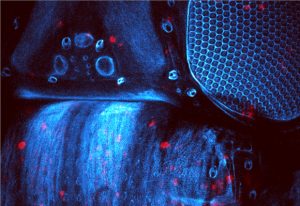
Fruit flies have something that we don’t have: they produce a protein called dumpy. This protein is the largest created by insects, and is comparable in size to the largest human protein – titin. While titin is vital for our muscle function, dumpy connects the soft cells of the insect’s…
SCIENCE & TECHNOLOGY2019
picture-of-the-weekscience-technology
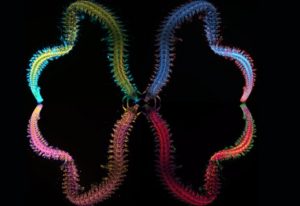
This gorgeous image of a stained adult marine worm was created by former EMBL postdoc Hernando Martinez using structured microscopy. The worm itself was captured during plankton extraction off the coast of Sweden. There are over 10 000 species of these swimming worms, and they have adapted to every…
SCIENCE & TECHNOLOGY2019
picture-of-the-weekscience-technology
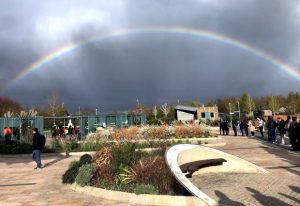
EMBL is an intergovernmental organisation, currently supported by 26 member states, one prospect and two associate member states. There are more than 1700 people working at EMBL, who come from more than 80 countries, creating a multicultural environment. EMBL also operates from six sites in Europe:…
LAB MATTERS2019
lab-matterspicture-of-the-week
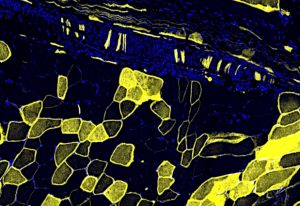
Have you ever wondered what reflex testing is about? Why does your doctor tap the space below your knee with a hammer to see if your leg kicks forward? At the centre of this involuntary reaction is the muscle spindle, of which you can see a close-up in today’s Picture of the Week. Muscle spindles…
LAB MATTERS2019
lab-matterspicture-of-the-week

EMBL’s sites provide spectacular views, such as this fiery sunset at the Wellcome Genome Campus in Hinxton. The campus, in the heart of the Cambridgeshire countryside, is home to several institutes and organisations working on genomics and computational biology. Among them is EMBL’s European…
LAB MATTERS2019
lab-matterspicture-of-the-week
No results found